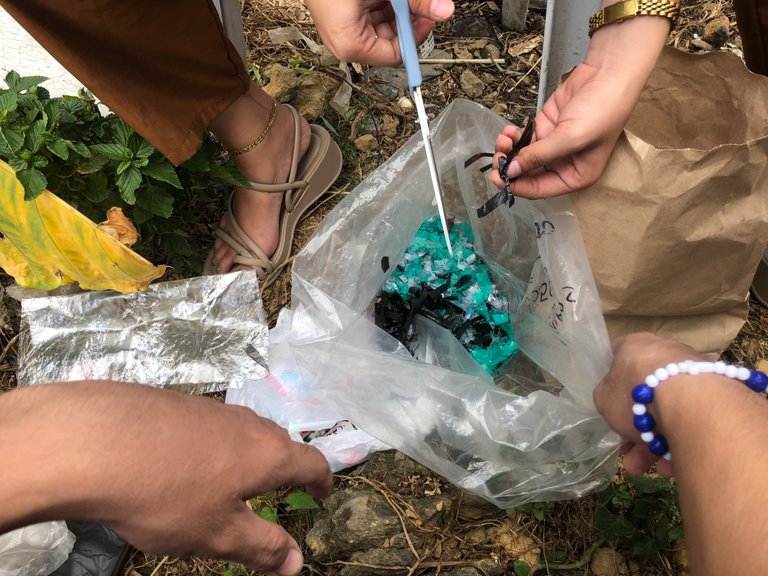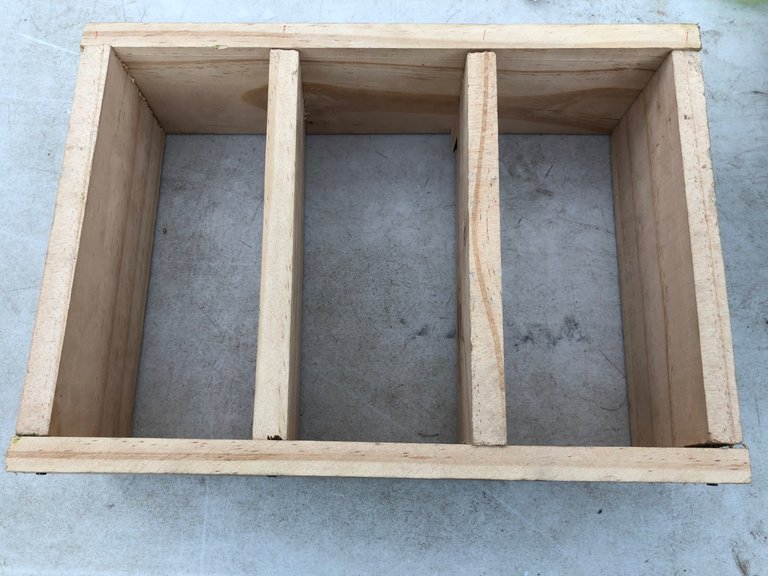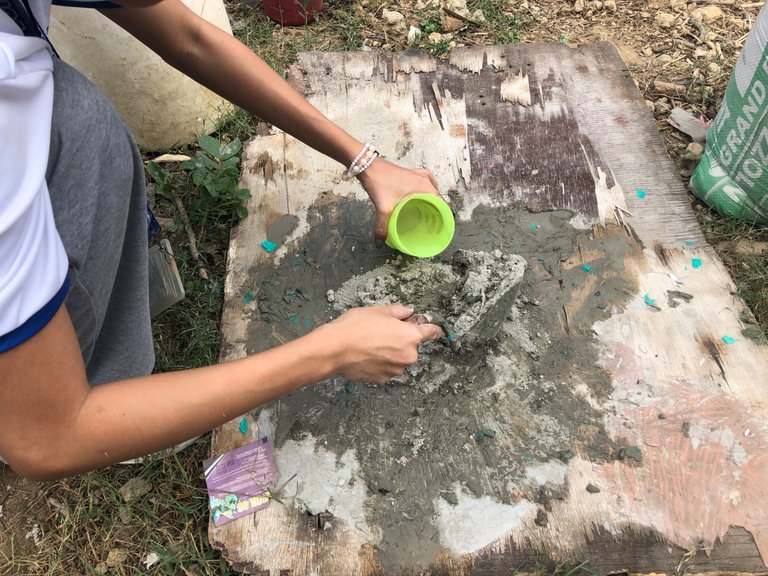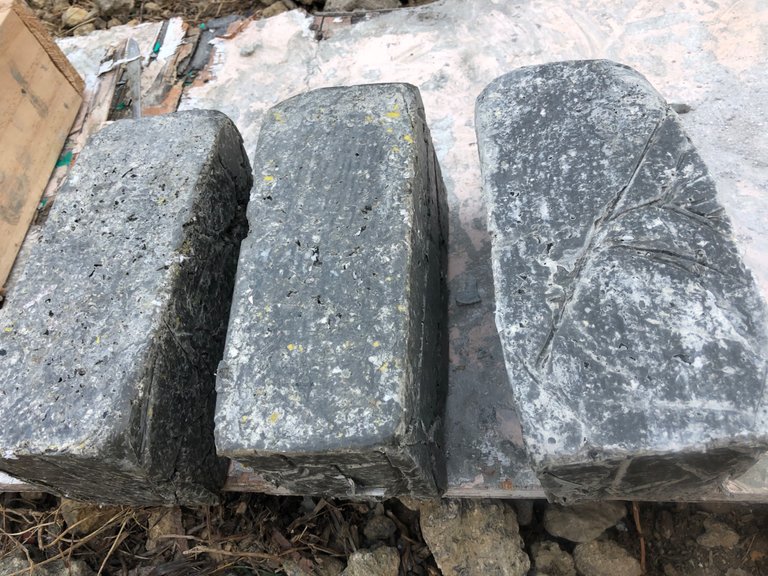
Hello hivers! Allow me to introduce myself again, @amishu, and welcome to my blog!🌷
Please take a moment to read my blog, where you will discover some insightful information and lessons on my next adventure!🗑️
We will share the inspiring story of how we turned a vision of sustainability into reality. In this series, we'll take you through our journey of creating eco-bricks from recycled paper and plastic waste. Discover how simple steps can lead to significant environmental impact, and learn how you too can contribute to a cleaner, greener planet.🌏

Our team took on an exciting project to find ways to manage waste, focusing on paper and plastic. Seeing so much waste around us, we wanted to find a way to recycle these materials. This led us to the idea of making eco-bricks using recycled paper and plastic. Our study aimed to see if these materials could be used to make strong and sustainable eco-bricks.🧱

First, we collected enough waste paper and plastic for our experiment. We organized community clean-ups and asked local businesses and schools to donate their waste materials. This took a few weeks, but we were happy with the amount of material we collected. With enough waste paper and plastic, we moved on to preparing the materials and buying the necessary tools and supplies.🛠️

We needed to shred the collected paper and plastic into small pieces. Ryan, one of our team members, had access to a shredder at his father’s workplace, which helped us shred the papers easily. Unfortunately, the shredder couldn’t handle plastic. We asked FDR Integrated Resource Recovery Management Inc. (FDR-IRRMI) if they could help us shred the plastic, but they couldn’t. So, we manually cut the plastic into small pieces, which took a lot of time but was necessary.✂️

With our shredded materials ready, we needed molds to shape our eco-bricks. We bought wood and nails to build these molds and asked the boys in our group to handle this task since they had more experience. While they built the molds, the rest of us prepared the cement mixture.


We carefully measured the cement and water to get the right consistency. Water is important in cement mixing because it activates the cement and helps it bind everything together.

We prepared two separate batches: one with shredded paper and the other with cut plastic. Before adding these materials to the cement, we soaked them in water to ensure they mixed well.



Mixing the cement with our hands was a memorable experience. Due to our limited resources, we only had one small garden shovel, which made the task challenging but also fun.☺️


We mixed the wet shredded paper with the cement until the consistency was even, then poured it into the mold. We repeated this process for the batch with cut plastic.


After filling the molds with our mixtures, we left them to dry for a full day. We were excited to see the results. Once the eco-bricks were dry, we took them out of the molds and tested their strength and durability.


Results and Findings📄
We conducted several tests, including throwing the eco-bricks to see how well they held up. It was clear that the eco-bricks made with recycled plastic were more durable than those made with paper. Our data showed that a 50% recycled plastic and 50% cement concentration produced the best results. This combination offered the most strength and stability, making it a good alternative to traditional bricks.


Our research concluded that using recycled plastics for making eco-bricks is an effective and sustainable method. This approach not only helps reduce plastic waste but also provides a strong and reliable building material. By offering an alternative use for plastic waste, our study helps improve environmental safety and promotes eco-friendly solutions.

The journey of creating these eco-bricks was both challenging and rewarding. We learned the importance of teamwork, resourcefulness, and determination. Our research showed that with innovative thinking, we can find practical solutions to some of the world's biggest environmental problems.🍃

We hope our study inspires others to explore similar sustainable projects and continue the fight against waste and pollution. Our journey may have started with a simple idea, but it has the potential to make a big impact on our environment.


Thank you for following our journey. Stay tuned for more updates and insights into our ongoing efforts to create a more sustainable future.✨
As I draw to a close, let us never forget that supporting one another is what will always make us stronger.
Let’s wrap this up and continue our engaging conversations in my next story.📖

I'm very grateful that you took the time to read my blog post. I'm excited for our more upcoming insightful talk. Stay tuned for more interesting dialogues and captivating stories that will pique your attention!
See you! and have a nice day!🫶🏻
Lovelots!💌🌷
That sounds interesting. How did you test the strength and durability of it?
Testing the strength and durability involved subjecting it to various stress tests and simulations to ensure it could withstand typical usage conditions. By also throwing it hard as possible.☺️
Did you guys used a machine or equipment for this or by just observation?
Sadly we didn't use any machine or equipment in testing it since we are lack of materials/resources. We just test it by throwing hard and by breaking it using hammer.
Oh okay.
Thank you so much @innerblocks!☺️🫶🏻
You are really doing great,keep it up especially you are entering college
That is a very good and sustainable research project Ma'am @amishu I hope the upcoming SHS students will be inspired and be able to discover more sustainable research project in their senior years.
wow, awesome stuff! yes, make use of that.. :)
Nos alegra mucho que siempre estén implementando el arte del reciclaje, lo hacen excelente, estos ladrillos reciclados sí que son muy útiles
Escrito por lionsaturbix / Written by lionsaturbix
¡¡¡Buen trabajo!!! Gracias por publicar tu excelente contenido en Hive Diy.